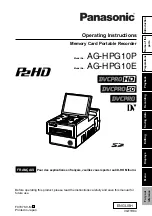
Page 14
IMPORTANT:
To prevent drive line damage,
adjust tractor drawbar to recommended setting.
Disengage tractor PTO before turning.
Adjust Trailer Hitch Clevis
Spreader should be approximately level when
attached to tractor.
Adjust clevis by changing hole location on trailer
tongue.
PRE OPERATION CHECKLIST
1. Carefully study and understand this manual.
2. Do not wear loose-fitting clothing, which may
catch in moving parts.
3. Always wear protective clothing
and
substantial
shoes.
4. Keep wheel lug nuts or bolts tightened to
specified torque.
5. Assure that agricultural implement tires are
inflated evenly and at proper pressure.
6. Give the unit a visual inspection for any loose
bolts, worn parts or cracked welds, and make
necessary repairs. Follow the maintenance safety
instructions included in this manual.
7. Check to see that no obstructions are present in
the spreader prior to start up.
8. Be sure that there are no tools lying on or in the
spreader.
9. Do not use the unit until you are sure that the
area is clear, especially children and animals.
10. The ball valve in the suction line and the return
line must be open prior to engaging PTO (handle
parallel with valve housing). (See Page 42
RESEROIR TANK)
11. Because it is possible that this spreader may be
used in dry areas or the presence of
combustibles, special precautions should be
taken to prevent fires and fire fighting equipment
should be readily available.
12. Don’t hurry the learning process or take the unit
for granted. Ease into it and become familiar with
your new spreader.
13. Practice operation of your spreader and its
attachments. Completely familiarize yourself and
other operators with its operation before using.
14. Securely attach to towing unit. Use a high
strength, appropriately sized hitch pin with a
mechanical retainer.
15. Do not allow anyone to stand between the tongue
or hitch and the towing vehicle when backing up
to the spreader.
HIGHWAY AND TRANSPORT
OPERATION
1. Adopt safe driving practices:
2. Always drive at a safe speed relative to local
conditions and ensure that your speed is low
enough for an emergency stop to be safe and
secure. Keep speed to a minimum.
3. Reduce speed prior to turns to avoid the risk of
overturning.
4. Avoid sudden uphill turns on steep slopes.
5. Always keep the tractor in gear to provide engine
braking when going downhill. Do not coast.
6. Do not drink and drive.
7. Comply with state and local laws governing
highway safety and movement of farm machinery
on public roads.
8. Use approved accessory lighting, flags and
necessary warning devices to protect operators of
other vehicles on the highway during daylight and
night time transport.
9. The use of flashing amber lights is acceptable in
most localities. However, some localities prohibit
their use. Local laws should be checked for all
highway lighting and marking requirements.
FIGURE 2. TRACTOR DRAWBAR















































